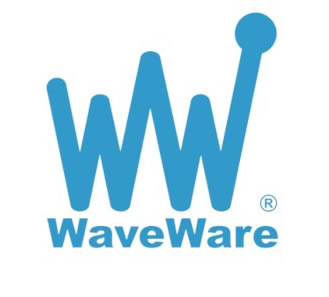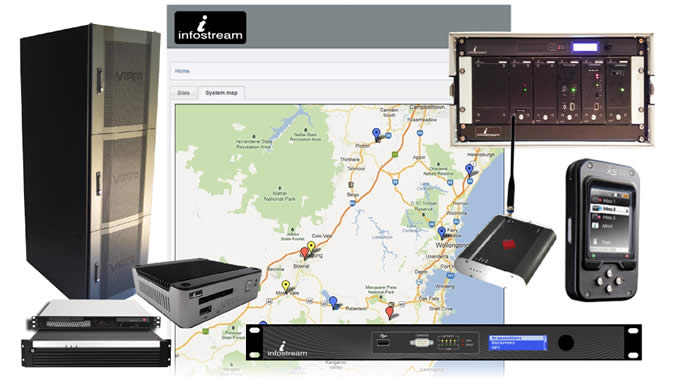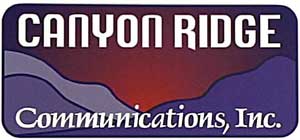Selected portions of the BloostonLaw Telecom Update, and/or the BloostonLaw Private Users Update —newsletters from the Law Offices of Blooston, Mordkofsky, Dickens, Duffy & Prendergast, LLP are reproduced in this section with the firm's permission. 
| BloostonLaw Telecom Update | Vol. 17, No. 30 | July 30, 2014 |

Headlines White House Rural Council Announces $10 Billion Private Investment Fund for Rural Projects On Thursday, July 24, the White House Rural Council announced the creation of a new U.S. Rural Infrastructure Opportunity Fund through which private entities can apparently invest in rural infrastructure projects. According to the official press release, CoBank is the fund's anchor investor, committing $10 billion to get the fund “off the ground.” Another entity, Capitol Peak Asset Management, will manage the new fund and work to recruit more investors to add to CoBank's initial commitment. The U.S. Department of Agriculture (USDA) and other federal agencies will help to identify rural projects that could be potential beneficiaries of financing both through this new fund and through other private sources. The fund is immediately open for business and more investors can now add to the initial $10 billion in available capital. According to a fact-sheet on the program published on the White House’s website, “Target investments will include rural community facilities (especially health care and educational facilities), rural water and wastewater systems, rural energy projects, rural broadband expansion efforts , local and regional food systems, and other rural infrastructure.” (Emphasis added). IRS Approves Windstream Plan to Classify Copper and Fiber as “Real Estate” for Tax Purposes In a development that may be of interest to any facilities-based telecom provider, Windstream Holdings, Inc. announced yesterday that it was recently cleared by the Internal Revenue Service to reclassify most of its copper and fiber-optic lines as “real estate”, which could potentially enable it (and others following suit) to cut a substantial amount from annual taxes. Specifically, Windstream plans to turn its copper and fiber networks, along with other assets, into a publicly traded “real estate investment trust,” or REIT. From Windstream’s press release : Under the transaction, Windstream will spin off certain assets, including its fiber and copper networks and other real estate, as a REIT, which will lease use of the assets to Windstream through a long-term triple-net exclusive lease with an initial estimated rent payment of $650 million per year. Windstream will operate and maintain the assets and deliver advanced communications and technology services to consumers and businesses.
According to the Wall Street Journal , this type of entity does not have to pay federal income taxes, with the understanding that it distributes at least 90 percent of taxable earnings to shareholders as dividends. Congress established the structure fifty years ago in order to “make it easier for people to invest in office buildings and shopping malls.” But, WSJ continues, its use has expanded over the years with various IRS approvals. The structure has been widely embraced, from computer-data storage companies to billboard owners to private prisons seeking to lower their tax bills. As Bloomberg points out, if state regulators and the Securities and Exchange Commission approve the transaction, it could open the door for the other phone carriers and even cable companies to consider similar deals (with advice from qualified tax counsel). It is unclear what implications the use of an REIT may have on receipt of universal service support. Cable Industry Seeks Reconsideration of Bureau Guidance on CAF Phase II Challenge Process The American Cable Association (ACA) and National Cable and Telecommunications Association (NCTA) have filed a Petition for Reconsideration of the Wireline Competition Bureau’s (WCB's) Public Notice, in which the Bureau provided guidance on how the CAF Phase II challenge process will be conducted in connection with the unsubsidized competitor rule. In the USF/ICC Order, the FCC delegated to the WCB the task of implementing the rule that support would not be used in areas already served by an unsubsidized competitor, and directed the WCB to design a process whereby parties could challenge the WCB’s initial determination of whether a particular area is served or unserved. As part of its recently released guidance, the WCB stated that parties must present evidence of current or former customers in a census block to challenge a decision by the WCB that a particular census block is unserved. ACA and NCTA argue that the WCB exceeded its delegated authority in adopting this requirement, and that it is inconsistent with the FCC's finding that broadband subsidies should be precluded in areas where unsubsidized competitors offer service. ACA and NCTA also state that this requirement was not part of the WCB's process for the CAF Phase I challenge process. ACA and NCTA argue that the WCB's decision to adopt this new evidentiary requirement represents an unexplained departure from past precedent. Accordingly, ACA and NCTA argue that the WCB should reverse its decision. Under the FCC’s rules, oppositions to Petitions for Reconsideration of final actions in rulemaking proceedings must be filed within 15 days of the Petition for Reconsideration, and replies must be filed within ten days of the oppositions. In the absence of further action by the FCC, oppositions are due August 6, 2014 and replies to oppositions are due August 16, 2014. Cities Seek Preemption of State Laws Restricting the Deployment of Municipal Broadband On July 24, 2014, the Electric Power Board of Chattanooga, Tennessee, and the City of Wilson, North Carolina, filed separate petitions asking the FCC to preempt, under section 706 of the Telecommunications Act, portions of Tennessee and North Carolina state statutes that restrict their ability to provide broadband services. Comments on the Petitions are due August 29, and reply comments are due on September 29. Specifically, both Petitions ask the FCC to find that advanced telecommunications capabilities (i.e., high-speed broadband services) are not being deployed on a reasonable and timely basis in the communities in and around the Petitioners’ areas, and to preempt the respective state restrictions on those grounds. In the case of Tennessee, the state law limits the ability of the Electric Power Board to provide advanced telecommunications services to its electric service area. In the case of North Carolina, the state law provides a similar geographic restriction, and also requires municipal providers to comply with the same requirements as private providers in addition to certain municipal requirements, which City of Wilson argues creates an un-level playing field. The Hill notes in an article on the subject that, “[e]arlier this year, [Chairman] Wheeler claimed in a blog post that it was “in the best interests of consumers and competition that the FCC exercises its power to preempt state laws that ban or restrict competition from community broadband." However, the article continues, Wheeler’s claim led to “harsh rebuke” when “[n]early a dozen GOP senators expressed “broad concern” in a letter to Wheeler last month and the House last week approved a measure to specifically block the FCC from preempting state laws.” Clients interested in finding out more information about either proceeding should contact the firm without delay. GAO Issues Report to Congress: FCC Should Improve Accountability for High Cost Fund This month, the U.S. Government Accountability Office issued a report at the request of Congress on accountability and transparency in the high-cost fund. In short, the GAO found, there isn’t any. According to the report, the GAO examined (1) the extent to which FCC implemented the funding reforms adopted in the USF Transformation Order and stakeholders’ views on FCC’s efforts, (2) the extent to which the FCC is collecting data to determine the effectiveness of these reforms, and (3) what changes, if any, states have made to their universal service funds since FCC adopted the reforms. In doing so, the GAO reports identifying “gaps in FCC’s data analysis and reporting that limit FCC’s ability to evaluate the program, demonstrate its effectiveness, and help ensure that the data collected will inform current and future reforms.” According to the report, the FCC “has not traditionally demonstrated how high-cost funds were spent and the results of that spending because the FCC had not collected data to do so.” The report further iterates that, “Representatives of competitive carriers and consumers told us the FCC should increase all carriers’ accountability for their use of high-cost funds by providing information on the results of the funding.” Furthermore, the report notes, “the FCC has not traditionally presented the high-cost program data and information it has collected in a manner that is easy and accessible for interested parties to use.” The report concludes that the FCC should demonstrate how high-cost funds were used to improve broadband availability, service quality, and capacity, such as by conducting analyses of carrier data and reporting the information in an accessible manner. House Passes Cellphone Unlocking Bill In a rare showing of bipartisanship, the U.S. House of Representatives last Friday unanimously passed a bill that will restore for consumers the right to unlock their cellphones for use on a different carrier’s network. The Unlocking Consumer Choice and Wireless Competition Act (S. 517) now only requires the President’s signature to become law. The Bill effectively overturns an October 2012 decision from the Librarian of Congress not to renew an exemption in the Digital Millennium Copyrights Act (DMCA) that allowed consumers to unlock their devices without running afoul of copyright law. That decision went into effect in January of 2013, prompting a “We the People” petition on the WhiteHouse.gov website urging the Obama administration to rescind the decision or to champion a bill that makes unlocking permanently legal. The petition quickly passed the 100,000 e-signature threshold needed for an official White House response, which was passed in March of 2013 and which read (in part): “The White House agrees with the 114,000+ of you who believe that consumers should be able to unlock their cell phones without risking criminal or other penalties. In fact, we believe the same principle should also apply to tablets, which are increasingly similar to smart phones. And if you have paid for your mobile device, and aren't bound by a service agreement or other obligation, you should be able to use it on another network. It's common sense, crucial for protecting consumer choice, and important for ensuring we continue to have the vibrant, competitive wireless market that delivers innovative products and solid service to meet consumers' needs.”
In light of these sentiments, President Obama’s signature would appear to be a foregone conclusion. Last December, CTIA’s largest member companies agreed to follow a voluntary set of principles relating to the unlocking by consumers of mobile wireless phones and tablets. The move was viewed as an effort to forestall FCC action on a Petition for Rulemaking that NTIA filed with the FCC last September. Interestingly, earlier versions of S.517 had the House of Representatives adding language that would prohibit bulk unlocking ( i.e., the practice of unlocking multiple phones, tablets and other devices for resale purposes). However, this language did not make it into the final draft of the bill that was passed and is headed to the White House. Once the unlocking bill becomes law, the FCC should have grounds to dismiss NTIA’s rulemaking petition. However, that will not put the unlocking issue to be once and for all. The exemption under S.517 will only last until the Librarian of Congress’s next rulemaking, scheduled for 2015. Thus, in the absence of permanent revisions to the DMCA, public advocacy organizations will need to renew their call for an unlocking exemption every three years, when the Copyright Office is required to review its rules. US telecom services have come under criticism that the locking issue and other considerations make the wireless broadband experience in America far inferior to broadband in many overseas markets such as Japan and Korea. Law & Regulation  FCC Releases Order, FNPRM to Modernize E-rate Program As previously reported, the FCC adopted a Report and Order and FNPRM on July 23, 2014, to "modernize" universal service support for schools and libraries by, among other things, dedicating $2 billion over the next two years in support for Wi-Fi networks, in addition to the current annual E-rate budget of $2.4 billion. (Docket No. 13-184). The FCC's Order has now been released. As reported, the FCC's Order dedicates funding for Wi-Fi networks; it phases out support for non-broadband services, such as pagers and phones; and it encourages consortia purchasing, notwithstanding NTCA's objection. Comments are due September 15; replies due September 30. In the FNPRM, the FCC seeks further comment on the future funding levels needed to meet the goals of the E-rate program, including whether the $1 billion annual budget for Wi-Fi is sufficient and whether E-rate funding should be raised even further. The FCC also seeks comment on "how the substantial reduction in the real purchasing power of the E-rate budget since the program’s creation should affect our analysis." The FCC states that the E-rate cap was not adjusted for inflation between 1998 and 2010, which "resulted in an approximately $800-900 million reduction in the real purchasing power of E-rate funding." The FCC also seeks comment on ways to simplify the administration of the E-rate program "by continuing to reduce the burden on applicants of applying for and receiving E-rate support, as well as promoting cost-effective purchasing through multi-year contracts and consortium purchasing." The FCC seeks comment on whether there are any additional programmatic or rule changes that will encourage applicants to join consortia either through additional incentives, or reduced application burdens. FCC Issues Enforcement Advisory and Consumer Guide on Open Internet Transparency On July 23, the FCC released Enforcement Advisory No. 2014-03 pertaining to broadband providers’ obligation to disclose accurate information to protect consumers. It’s easy to forget in the wake of the D.C. Court of Appeals’ decision overruling the no-blocking and no-discrimination rules, and the on-going Further Notice of Proposed Rulemaking proceeding on Open Internet, that the original transparency rule was upheld and is still in effect. The Advisory reminds: Applicability. The Transparency Rule applies to every provider of broadband Internet access services in the United States. This includes fixed broadband Internet access providers (for example, cable companies, landline telephone companies, and fixed wireless or satellite service providers), as well as mobile broadband Internet access providers (for example, mobile wireless providers that offer data plans for Internet access for smartphones). Requirements. The Transparency Rule requires every fixed and mobile broadband Internet access provider to “publicly disclose accurate information regarding the network management practices, performance, and commercial terms of its broadband Internet access services sufficient for consumers to make informed choices regarding use of such services and for content, application, service, and device providers to develop, market, and maintain Internet offerings.” Accuracy. “Accuracy is the bedrock of the Transparency Rule.” Accurate disclosures ensure that consumers—as well as the Commission and the public as a whole—are informed about a broadband Internet access provider’s network management practices, performance, and commercial terms. Thus, the Transparency Rule prevents a broadband Internet access provider from making assertions about its service that contain errors, are inconsistent with the provider’s disclosure statement, or are misleading or deceptive. Penalties. Parties that violate the Transparency Rule may be subject to Commission enforcement, potentially including monetary penalties.
The Consumer Guide is a brief one-page affair that tells consumers, “The Rule requires that what providers tell you about their broadband service is sufficient for you to make informed choices – including choices about speed and price. The Rule also requires that providers’ information about their broadband service must be accurate and truthful.” The Guide also encourages consumers to test their broadband speeds using any of the freely available online tests, or using the FCC’s Mobile Broadband Speed Test App. FAA Proposal to Reduce Building Heights Could Have Adverse Consequences Various news outlets are reporting that the Federal Aviation Administration has issued a proposal to limit the height of buildings and other man-made structures (such as towers) near airports. Purportedly, the basis for the proposal is safety and the FAA’s desire to ensure that aircraft can land safely at airports following the loss of an engine during take-off. Because the airplane would have less power on a single engine, the FAA is proposing to (a) lower the glide-slope into the airport and (b) extend its length so that the distance is further from the end of the runway. It is this glide-slope that determines the overall height of buildings and antenna towers and, if permitted, whether obstruction marking and lighting will be required. As a result, it is expected that the FAA could limit the height of antenna towers at locations near airports. What is not known is how this would impact existing structures – especially where the owner proposes improvements or lighting changes. OSHA Issues Updated Enforcement Guidance Re Tower Climbers On July 17, the Occupational Safety and Health Administration (OSHA) released a “directive” providing general enforcement guidance and procedures for hoisting employees and materials up and down a communications tower. "This directive ensures that communication tower workers are protected regardless of the type of the work they are doing on communication towers. Employers and cell tower owners and operators must make sure workers are properly trained and protected,” said Assistant Secretary Dr. David Michaels. “This directive replaces CPL 02-01-36, dated March 26, 2002. The previous directive provided compliance guidance for hoisting personnel to or from their workstations during new tower erection only. This directive covers all hoisting of personnel to or from workstations on communication towers,” the Directive explains. The purpose behind this new directive is to provide guidance to field enforcement personnel to ensure uniform enforcement of OSHA standards and policies, reports Inside Towers magazine. Hoists are used instead of conventional ladders when a worker is going to be climbing the tower repeatedly, and/or transporting materials up the tower. Before allowing an employee to perform any job related to hoisting employees aloft for tower work, the employer must ensure that the employee receives effective training on the fall protection equipment used and how to safely access and depart from communication towers. A number of other restrictions are imposed, including but not limited to: - Use of an anti-two block device on all hoists, except where it can be demonstrated that the ambient radiation frequency (RF) precludes that use.
- When hoisting personnel (versus material), de-rate the hoist’s specified rated capacity by a factor of 2 (reduced by half).
- Provide all employees with, and require employees to use, the proper personal protective equipment (including fall protection equipment).
- Inspect the protective equipment before each lift.
- Conduct a trial lift of the Maximum Intended Load from ground level to the location to which personnel are to be hoisted.
- Document all trial lifts, inspections, proof tests, and pre-lift meetings, and keep the documentation on site at a readily accessible location during the entire length of the project.
- Ensure that employees being hoisted remain in continuous sight of the operator or signal person, or that there are radio communications with the employees if visual contact is not possible.
- Limits on the speed of the hoist, the weight of hoisted loads and the proximity of the hoist to power lines are imposed.
Clients that allow employees to climb towers by hoist must follow the new directive, and should contact OSHA counsel with any questions. Clients allowing contractors to access their tower by hoist may want to ensure that the contractor is aware of and agrees to abide by this and other applicable rules and directives. The OSHA directive can be found at: https://www.osha.gov/OshDoc/Directive_pdf/CPL_02-01-056.pdf FCC Extends Reply Comments Deadline in Citizens Broadband Radio Service Proceeding In a Public Notice released on July 28, the FCC has extended the deadline until August 15 for filing reply comments on proposed rules to establish a Citizens Broadband Radio Service (CBRS) in the 3550-3650 MHz band (3.5 GHz band), to allow interested parties to more thoroughly address the complex technical, legal and policy issues raised in the Further Notice of Proposed Rulemaking (FNPRM) in this proceeding. The Commission action was in response to extension requests filed by the Satellite Industry Association, the Public Interest Spectrum Coalition, Utilities Telecom Council, and the Wireless Internet Service Providers Association. In addition to the proposal to establish a new Part 96 of the FCC’s rules to govern the CBRS, the FCC is also proposing to consolidate the neighboring 3650-3700 MHz band (3.65 GHz band) into the CBRS regulations, to provide a contiguous 150 megahertz of spectrum. Interference protection would be implemented via a comprehensive, if complex and costly, framework to authorize a variety of small cell and other broadband uses of the 3.5 GHz band on a shared basis with incumbent federal and non-federal users, with oversight and enforcement through a federal Spectrum Access System. A group of our clients with interests in the 3.65 GHz band filed comments opposing the consolidation. We argued that the Commission should preserve the existing regulatory approach to 3.65 GHz operations under Part 90 of the FCC’s rules, claiming that consolidation would threaten existing interference protection rights and would stifle future investments in operations that are currently being successfully run. Aside from adjacency of the two bands in the RF spectrum, there is no nexus between them – the objective for the 3.65 GHz band regulatory approach was to establish a radio service with minimal regulatory barriers to encourage multiple entrants and to stimulate the rapid expansion of broadband services, especially in America’s rural heartland; while the objective of the CBRS is to create an innovation band where the Commission can explore new methods of spectrum sharing between federal and non-federal users and to promote a diverse array of network technologies, with a focus on relatively low-powered applications such as small cells. Comments on the 3.65 GHz band consolidation issue were sharply divided between the haves and have-nots. Licensees and others with current interests in the 3.65 GHz band oppose the consolidation largely for the reasons cited in the comments filed by our clients. For the most part, those with no current interests in the 3.65 GHz band support the consolidation – and why not – they will not be harmed if the current regulatory approach is abandoned in favor of one that is more complex and costly. We believe it would be in the best interests of our clients with 3.65 GHz operations to file brief reply comments with the FCC pointing out this dichotomy of opinions and to reinforce the positions taken in the initial comments. To that end, in the next few days we will be contacting our clients who participated in the initial comments. Any of our other clients who have a stake in the outcome of the proposed 3.65 GHz band consolidation issue should let us know if they wish to participate in reply comments, which are due August 15. Reply Date for T-Mobile Data Roaming Petition Extended Until August 20 The FCC’s Wireless Bureau has granted a brief extension of time, until Wednesday, August 20th, for interested parties to file reply comments on the T-Mobile data roaming Petition for Declaratory Ruling (WT Docket No. 05-265). A joint extension request was filed by NTCA and RWA and the Blooston law firm because the original August 11th reply deadline falls during NTCA’s regional conference and because an extension would allow rural carriers to meet and discuss the issues in-person and file reply comments that are better informed. By way of background T-Mobile’s petition asked FCC to provide “prospective guidance and predictable enforcement criteria” with respect to the “commercially reasonable” standard that applies under FCC rules to data roaming agreements. The Blooston Rural Carriers filed initial comments in support of T-Mobile’s petition on July 10. In addition to renewing the call for a “shot clock” for roaming negotiations to limit the opportunity for host carriers to delay in negotiating roaming agreements, the BloostonLaw comments argued that a lack of access to data roaming services at a reasonable cost or unreasonable delay could hamper small and rural carriers’ ability to offer mobile wireless service on rates and terms that are reasonably comparable to similar services in urban areas. Industry 
FCC to Hold Webinar for Form 477 Filers on New Filing Interface The FCC’s Wireline Competition Bureau and Wireless Telecommunications Bureau will hold a webinar for the filers of FCC Form 477, Local Telephone Competition and Broadband Reporting, on how to use the new filing interface. The webinar will be held at FCC Headquarters, 445 12 th Street, SW, Washington, DC on Wednesday, August 6, 2014 from 2:30 p.m. to 3:30 p.m. EDT in the Commission Meeting Room. The public can attend the webinar in person or view it over the Internet via live streaming at fcc.gov/live. Those watching online will have the opportunity to email questions to the FCC staff during the event and have the answers broadcast to all participants. The new Form 477 filing interface will begin accepting filings of data as of June 30, 2014 on July 31, 2014. These filings are due October 1, 2014. Interested parties can learn more about the updated Form 477 at http://www.fcc.gov/encyclopedia/form-477-resources-filers and http://www.fcc.gov/encyclopedia/changes-coming-form-477-data-collection . Calendar At-A-Glance 
July
Jul. 31 – FCC Form 507 (Universal Service Quarterly Line Count Update) is due.
Jul. 31 – Carrier Identification Code (CIC) Report is due.
Jul. 31 – FCC Form 690 (Mobility Fund Phase I Auction Winner Annual Report) is due. August
Aug. 1 – FCC Form 502 (North American Numbering Plan Utilization and Forecast Report) is due.
Aug. 1 – FCC Form 499-Q (Telecommunications Reporting Worksheet) is due.
Aug. 6 – Oppositions are due on Petition for Reconsideration of CAF Phase II Challenge Public Notice.
Aug. 8 – Comments are due on the FCC’s Omnibus USF/ICC Order.
Aug. 8 – Comments are due on Fourth Congressional White Paper on Communications Act Update.
Aug. 14 – Deadline for CAF Phase II Challenges.
Aug. 15 – Reply comments are due on Citizens Broadband Radio Service FNPRM.
Aug. 16 – Oppositions are due on Petition for Reconsideration of CAF Phase II Challenge Public Notice.
Aug. 20 – Reply comments are due on T-Mobile Data Roaming Petition.
Aug. 20 – Comments are due on WCB Public Notice on Terminating Dormant Proceedings.
Aug. 20 – Comments are due on Proposed Reasonable Comparability Benchmark for Broadband.
Aug. 29 – Copyright Statement of Accounts is due. September
Sep. 2 – FCC Form 477 due (Local Competition and Broadband Reporting).
Sep. 4 – Reply comments are due on WCB Public Notice on Terminating Dormant Proceedings.
Sep. 10 – Reply comments are due on the Open Internet NPRM.
Sep. 10 – Reply comments are due refreshing the record on the 2010 Broadband NOI.
Sep. 15 – Comments are due on E-Rate Modernization NPRM.
Sep. 30 – Reply comments are due on E-Rate Modernization NPRM. October
Oct. 14 – Deadline for applications for rural broadband experiments. | 




























































 David George and Bill Noyes
David George and Bill Noyes






